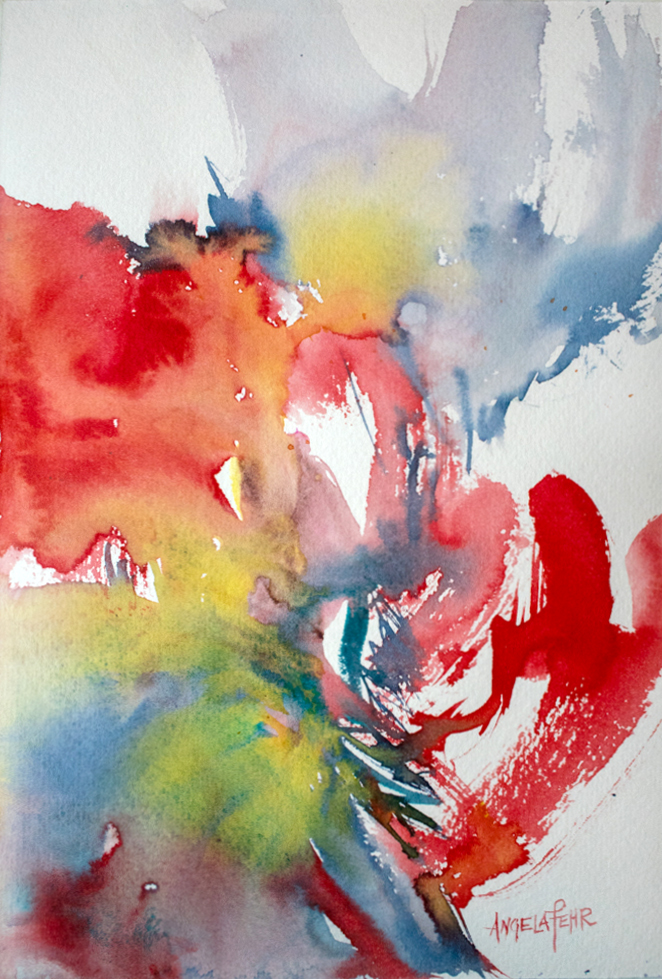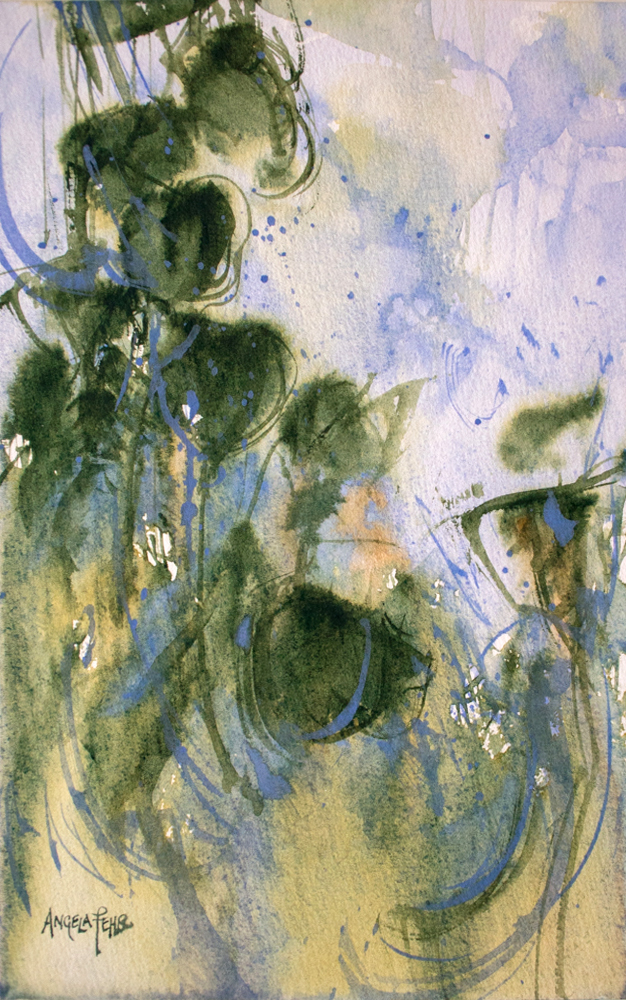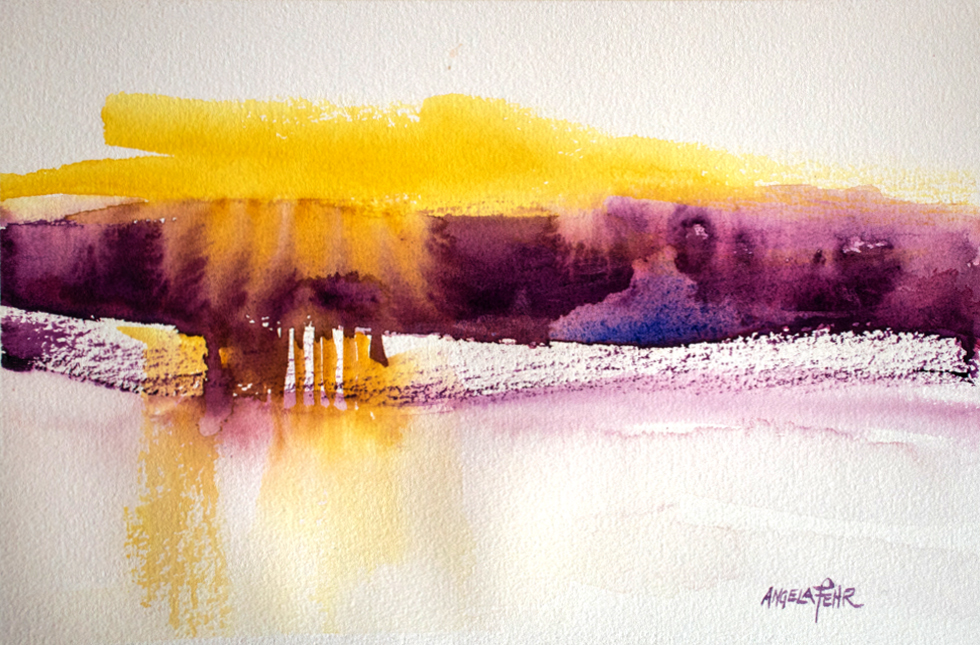How to answer: "If you don't like that painting, I'll take it!"
Not every painting makes it into a frame. In my studio, I would say the show-quality paintings are vastly outnumbered by the ones I consider inferior, and because inspiration is an unpredictable and contrary muse, I rarely throw anything away. There are stacks and stacks of paintings that will likely never see a gallery wall or debut on my web site. Because I've been painting so long, even my weakest paintings can have appeal to those who love my style, and it's always been hard to explain why I wouldn't just sell those paintings anyway. If there are people willing to pay a little less for work that doesn't meet my personal criteria, why wouldn't I take advantage of that? Why shouldn't I release art I don't love into the world if someone else likes it?
I've been reading two books lately; Dorothy Sayers' "Unpopular Opinions," and Lewis Hyde's "The Gift" and both talk extensively and profoundly (my brain hurts!) on the inner life of creativity and the value of something we can't price. I've become more and more convinced that we are living in a time of poverty of soul. Society encourages us to invest and indebt ourselves to tangibles; to clothing, cars, homes and hair. "Personal care" is our term for the money and time we spend on our outer appearance, care of the body to present ourselves as flawlessly as possible to the outside world, and yet truly "personal care," nourishing our heart-health, is relegated to the corners of our lives. We have adopted a fast-food, Dollar Store mentality toward the most precious part of our identities.
 Freely Spoken, watercolour by Angela Fehr
Freely Spoken, watercolour by Angela Fehr
Imaging the Unspoken
In her essay, "Toward a Christian Aesthetic," Sayers suggests that in art..."the image of [the artist's] experience, we can recognise the image of some experience of our own -- something that had happened to us, but which we had never understood, never formulated or expressed to ourselves, and therefore had never known as a real experience...It is as though a light were turned on inside us. We say: 'Ah! I recognise that! That is something which I obscurely felt to be going on in and about me, but I didn't know what it was and couldn't express it. But now that the artist has made the image...I can posses it and take hold of it and make it my own, and turn it into a source of knowledge and strength.'...The artist's work comes to us as a revelation of new truth...the recognition of a truth which tells us something about ourselves that we had not been always saying...We did not know it before, but the moment the [artist] has shown it to us, we know that, somehow or other, we had always really known it."
Just think about that for a minute.
How powerful it is to be an artist, and how sobering the responsibility, if "imaging the unspoken" is our task!
How much must an artist give to their art, in order to create art that communicates so deeply? If we truly believe that there is art that can speak into the soul, it becomes a serious thing to be an artist.
 Ivied Walls, watercolour by Angela Fehr
Ivied Walls, watercolour by Angela Fehr
A painting is more than a picture.
A simple description of my paintings is that I create landscape, floral and abstract paintings (of landscapes and flowers), but that is like saying that the sun is a bright light. My paintings express my experience. If a "local landscape" painting doesn't speak of the ties that bind a me to my home, if it's just a competent representation of a place, this creates a void that would hold me back from sharing that painting with others. If my floral doesn't hint at the awe and beauty we can savour in slowing down to take in the intricate complexities of the natural world, it's just shapes on paper. If my abstract painting doesn't glow with emotion because I held back out of fear of rejection or condemning self-criticism, will it inspire the viewer to freely live their purpose without fear?
A painting that doesn't make the cut isn't necessarily a bad painting in an aesthetic sense, but for the artist, if the soul of a painting is missing, it's like making friends with a department store mannequin. They might look good dressed up, but the life is missing, and there's no opportunity for relationship.
This is exciting for me to write about, because it's new revelation for me. I've always been uncomfortable with the idea of selling work that didn't feel like it was "good enough" and yet couldn't really articulate why. I'm humbled to realize that in choosing to only show and share art that expresses my heart, I'm subscribing to a code of ethics that insists on truth and vulnerability and rejects anything less from my work.
 The Sun Always Comes Back, watercolour by Angela Fehr
The Sun Always Comes Back, watercolour by Angela Fehr
There's a bond between artist and collector.
This is why, when someone purchases a painting, it's more than a financial transaction. When you buy a car, you shake hands with the salesman and likely never think of him again. But when you bring a piece of original art into your home, every time you see that painting, you see the artist. You consider the hand that placed those brush strokes, the thoughts and intentions that formed the painting. You're moved by the knowledge that those colours, that shape that spoke out from the artist, spoke also to you, and continues to speak, inviting you to reflect and live more fully the inner life created through thought and emotion.
Could this be why it's so hard to price art? No formula calculating square inches and hours spend, cost of materials, can place a value on the amount of heart and soul poured into a painting. That part of any piece of art can only be considered as a gift from the artist, and is more beautiful for it.

